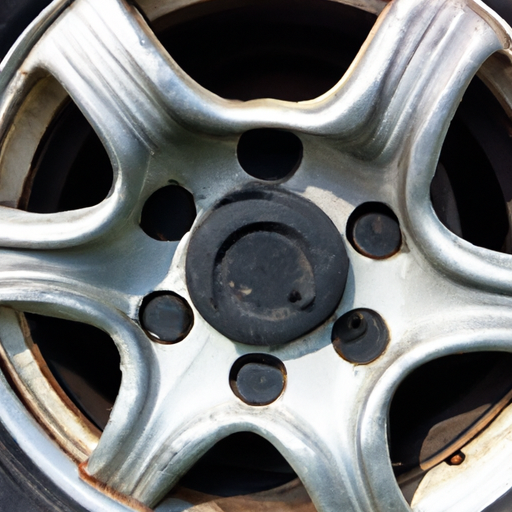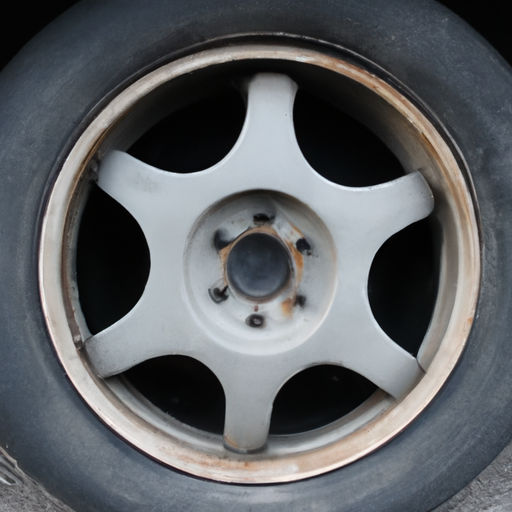Imagine cruising down the road in your car when suddenly you notice that one of your wheel covers is missing. You might wonder if it’s safe to continue driving without it, or if it’s purely a cosmetic issue. In this article, we will explore whether driving without a wheel cover is a cause for concern, and what implications it may have on your vehicle’s performance. So, fasten your seatbelt and join us on this wheel coverless journey!
Can You Drive Without A Wheel Cover?
Driving without a wheel cover is technically possible, but it is not recommended for several reasons. A wheel cover, also known as a hubcap, is the decorative cover that goes over the wheel of a vehicle. While it may seem like a minor accessory, it serves important purposes such as meeting legal requirements, enhancing tire performance, protecting against rust and corrosion, improving vehicle appearance, minimizing aerodynamic effects, ensuring safety, and even impacting fuel efficiency. In this article, we will explore the significance of wheel covers and why it is advisable to have them on your vehicle.
Legal Requirements
In some jurisdictions, it is mandatory for vehicles to have wheel covers. These requirements are put in place to promote safety and maintain a standardized look for vehicles on the road. While the specific regulations may vary from place to place, you may find that driving without a wheel cover could result in penalties such as fines or even failed vehicle inspections. Therefore, it is crucial to familiarize yourself with the legal requirements in your area and ensure your vehicle complies with them.
Importance of Wheel Covers
Apart from fulfilling legal obligations, wheel covers have numerous benefits that make them an essential component of your vehicle. One of the primary advantages is that they protect the wheels from dirt, debris, and other external elements. This can help prevent damage to the wheels, ensuring they last longer and perform optimally. Additionally, wheel covers provide a layer of insulation, protecting the wheel bolts and lug nuts from rust and corrosion caused by exposure to moisture, salts, and other corrosive substances.

Effects on Tire Performance
Driving without a wheel cover can also affect tire performance. Wheel covers help to maintain the balance of the tires by reducing the impact of wind resistance. They minimize the vibrations caused by air flow, allowing for a smoother and more comfortable ride. Furthermore, wheel covers prevent the accumulation of brake dust on the wheels, which can otherwise lead to a decrease in brake performance. By keeping the wheels clean and debris-free, wheel covers play a vital role in ensuring optimal tire performance and longevity.
Effects on Vehicle Appearance
When it comes to the appearance of your vehicle, wheel covers play a significant role. They add a finishing touch and enhance the overall aesthetics of the vehicle by concealing the bare wheel and giving it a polished, sleek look. Without a wheel cover, the exposed wheel can look dull and unappealing, detracting from the overall visual appeal of the vehicle. Thus, driving without a wheel cover may compromise the appearance of your vehicle, which is an important consideration for many car owners.

Protection Against Rust and Corrosion
As mentioned earlier, wheel covers provide protection against rust and corrosion, which can be a serious problem for wheels. Rust not only affects the visual appeal of the wheels but can also weaken their structural integrity. The protective layer provided by wheel covers serves as a barrier between the wheels and external elements, preventing moisture and corrosive substances from coming into direct contact with the metal. This protection goes a long way in preserving the longevity of the wheels and maintaining their functionality.
Aerodynamic Effects
Another aspect to consider is the aerodynamic effects of driving without a wheel cover. Wheel covers are designed to reduce aerodynamic drag, which can negatively impact fuel efficiency. The smooth surface of a wheel cover helps to streamline the airflow, reducing turbulence and drag that are created by the open design of the wheel. Without a wheel cover, your vehicle may experience increased resistance from the air, resulting in decreased fuel efficiency and potentially higher fuel consumption. Therefore, it is wise to have wheel covers to optimize the aerodynamics of your vehicle.

Safety Concerns
Driving without a wheel cover can also pose safety concerns. The exposed wheel can accumulate dirt, rocks, and debris while driving, causing potential hazards on the road. These particles can become projectiles, posing threats to both your vehicle and other drivers if they get dislodged. Furthermore, wheel covers also act as a protective barrier, preventing accidental contact with the wheel itself. This can be beneficial in situations where you may need to change a tire or perform maintenance on the wheels.
Impact on Fuel Efficiency
As mentioned earlier, wheel covers have aerodynamic effects that can impact fuel efficiency. By reducing aerodynamic drag, they contribute to better fuel consumption. When driving without a wheel cover, the open design of the wheel creates more turbulence, resulting in increased resistance to airflow. This increased resistance translates to higher fuel consumption, ultimately costing you more money at the gas pump. Installing wheel covers can help to mitigate this effect and improve your vehicle’s fuel efficiency.

Wheel Cover Alternatives
If you prefer a different look for your wheels or want to explore alternatives to traditional wheel covers, there are various options available. One popular alternative is aftermarket alloy or steel rims, which often have built-in designs and finishes that eliminate the need for wheel covers. These custom rims can enhance the appearance of your vehicle while providing the same protective benefits as traditional wheel covers. However, it is essential to ensure that any alternative you choose is legal, meets safety standards, and does not compromise the performance of your tires or vehicle.
Conclusion
In conclusion, while it is technically possible to drive without a wheel cover, it is not recommended due to the various benefits they provide. Wheel covers fulfill legal requirements, enhance tire performance, protect against rust and corrosion, improve vehicle appearance, minimize aerodynamic effects, ensure safety, and impact fuel efficiency. By keeping your wheels clean, protecting against external elements, and contributing to the overall aesthetics and functionality of your vehicle, wheel covers are an essential accessory for any car owner. So, the next time you consider driving without a wheel cover, remember the importance of these seemingly simple accessories.


